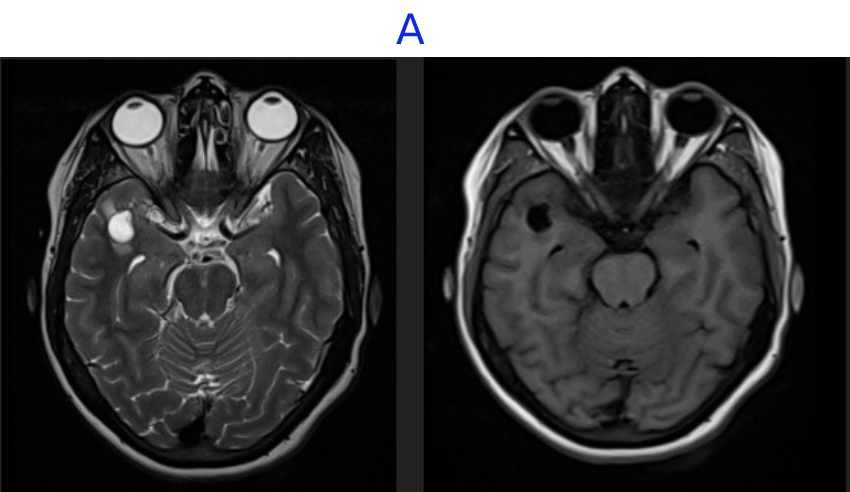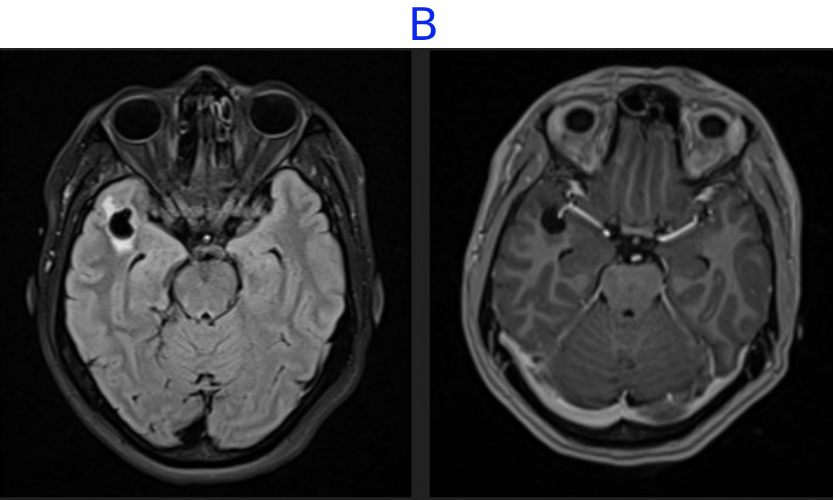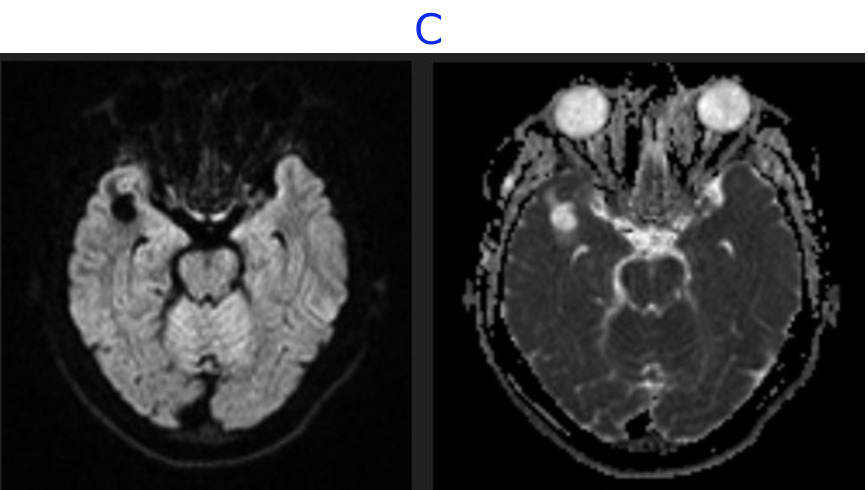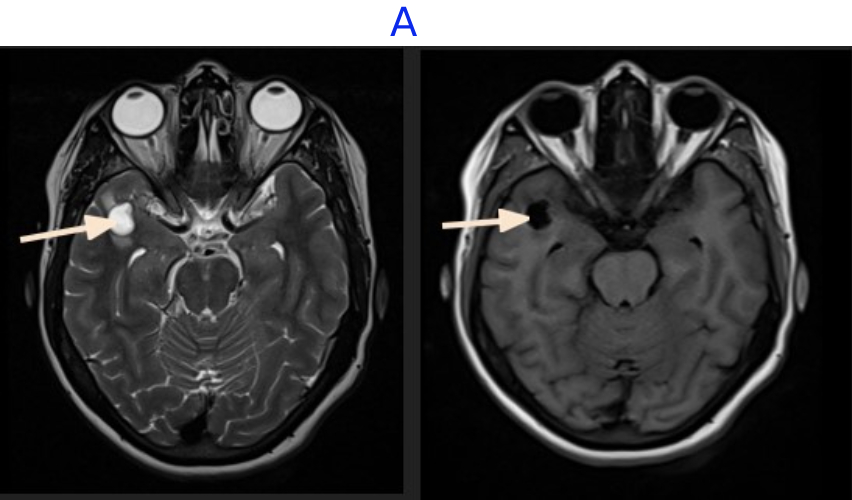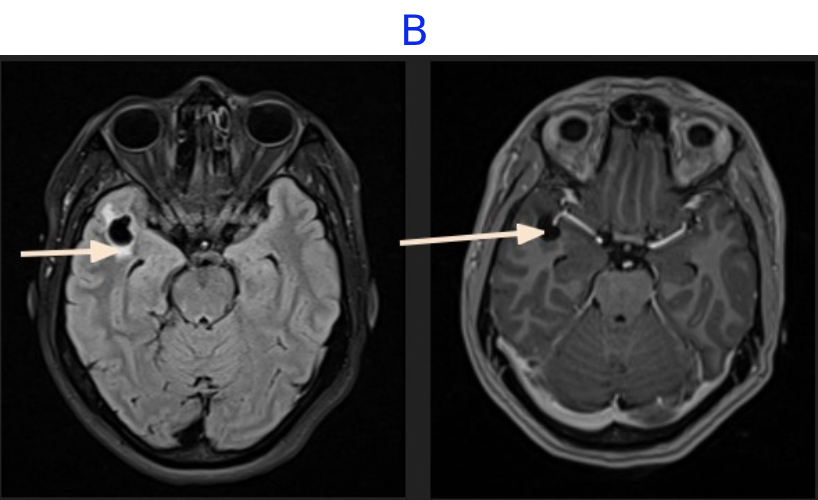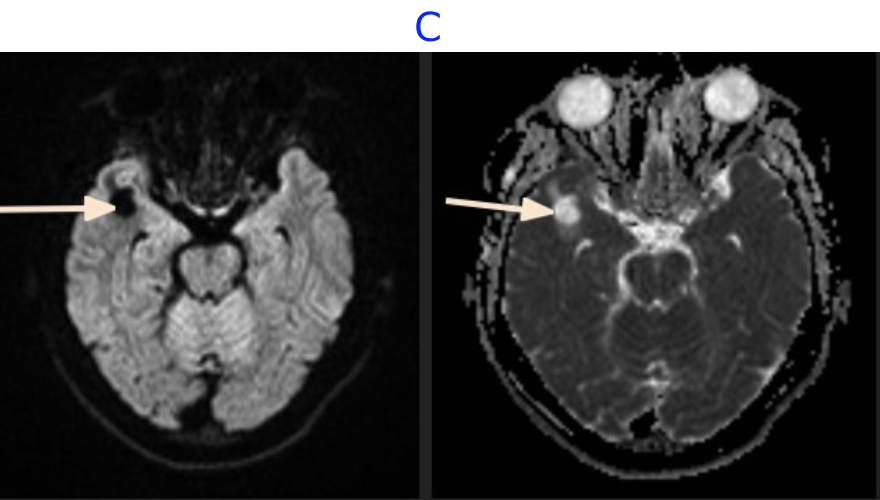45 year old female presents with complaints of headache, giddiness and occasional vertigo for which MRI Brain was advised.
LEGENDS :-
- A. A well-defined, intra-axial, T2 hyperintense, T1 hypointense lesion measuring 14 x 12 x 9mm noted in the subcortical white matter of the peri-Sylvian right anterior temporal lobe
- B. FLAIR sequence demonstrates mild perilesional edema in the right anterior temporal lobe.Post contrast T1 demonstrates no enhancement and M2 segment of right MCA indenting the antero-superior pole of the lesion
- C. No diffusion restriction in DWI
DIAGNOSIS :-
Giant VR space in the right anterior temporal lobe.
DISCUSSION :-
Definition:
- A special variant of tumefactive perivascular spaces (also known as opercular PVS)
- Notable for imaging mimicry of cystic tumors due to cystic appearance and perilesional changes
Epidemiology:
- Predilection reported in women
- Affected age range: 24–86 years
- Clinical Presentation:
- Usually asymptomatic with no direct clinical manifestations
Pathology & Location:
- Etiology uncertain; possible mechanisms:
- Occlusion of tiny CSF?communicating channels by a vascular loop
- Abnormal CSF dynamics
Locations:
- Anterior temporal lobe (temporal pole)
- Frontal operculum (opercular perivascular spaces)
- Radiographic Features – MRI
Typical MRI characteristics:
- Internal signal identical to CSF on all sequences
- No enhancement after contrast
- Size remains stable over time, even if surrounding signal changes
Specific imaging findings:
- Surrounding perilesional edema (~80% of cases), which may be mild to extensive
- Usually in contact with a branch of the middle cerebral artery (~90%)
- Associated focal cortical thinning
REFERENCES
https://radiopaedia.org/articles/anterior-temporal-lobe-perivascular-spaces
https://pmc.ncbi.nlm.nih.gov/articles/PMC4683889/
https://journals.sagepub.com/doi/full/10.1177/2514183X20905252
DR. RAHUL KARTHIK
LINGUTLA CONSULTANT RADIOLOGIST,MANIPAL HOSPITAL,
YESHWANTHPUR
DR. FATHIMATH ASHILI
KM RADIOLOGY RESIDENT,MANIPAL HOSPITAL,
YESHWANTHPUR


